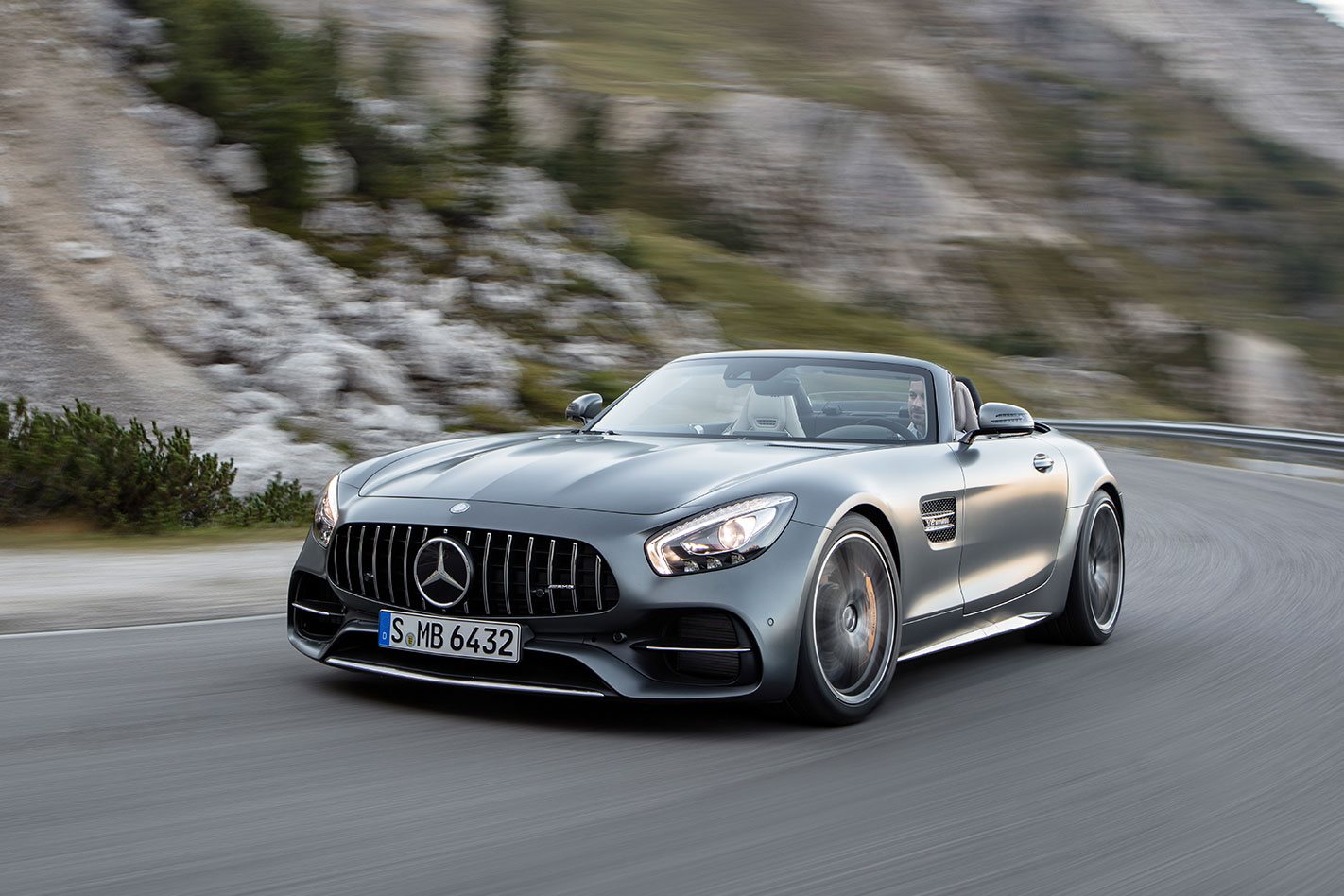Rules are made to be broken at AMG. The latest rule they’ve broken is the one that says any car will be worse when you cut the roof off it.
Bound to be, usually, because the roof is an integral part of the chassis and it’ll never quite be the same after you light up the gas axe, even if you bolt an RSJ underneath it.
But AMG cut the roof off the GT C coupe and created a roadster that almost matches its progenitor in every tangible way, but surpasses it by every visceral measure.
The GT C’s abilities were well beyond most drivers anyway, and AMG has dialled that back a touch and used that grip reserve to ratchet up the emotions without losing its integrity. It ends up being more of a sports car, more of the time.
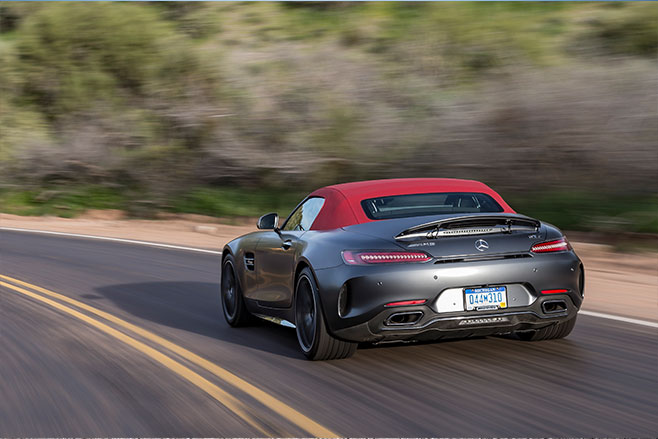
Its chassis feels rock solid and its suspension compliments it, and that thumping 410kW version of the dry-sump 4.0-litre hot-vee twin-turbo V8 is always either burbling or bellowing.
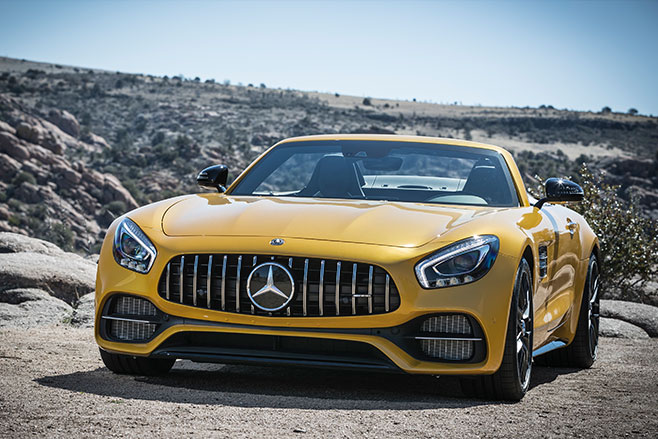
The rear-driver gets a big dose of handler helper in the form of the GT R’s rear-wheel steering and it’s just a charming place to be whether the car’s at two of its tenths or 13 of them.
It goes from gentle cruises full of birdsongs with the roof down to fully-fledged fauna frightener, brimming with turbo fizzes, pump whines, exhaust bellows, pops and crackles, in the flick of an ankle.
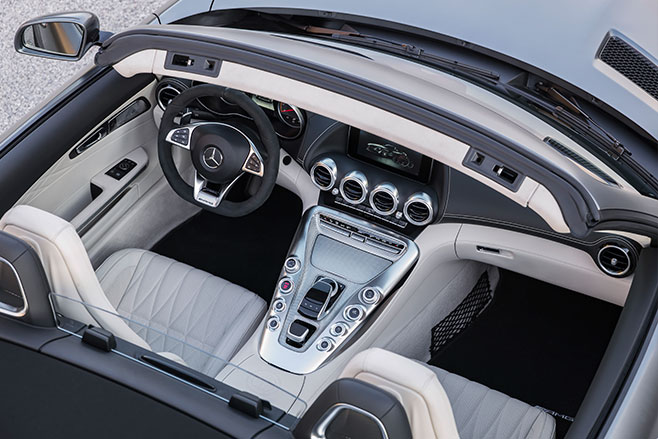
It’s about 50kg heavier than the Coupe, at 1660kg (DIN), but its only significant shortcoming is a 65-litre tank, which I’d personally feel compelled to empty every time I saw the needle on full.
There’s a base version of this car with 350kW, but why bother with that when the GT C has 26kW more than the GT S Coupe and falls just 20kW shy of the brilliant GT R?
It’s not just about power, though that helps when you want to snap to 100km/h in 3.7 seconds and on to 316km/h. Power is the headline, while the 680Nm of torque between 1900 and 5750rpm is what gets the job done most of the time for most people.
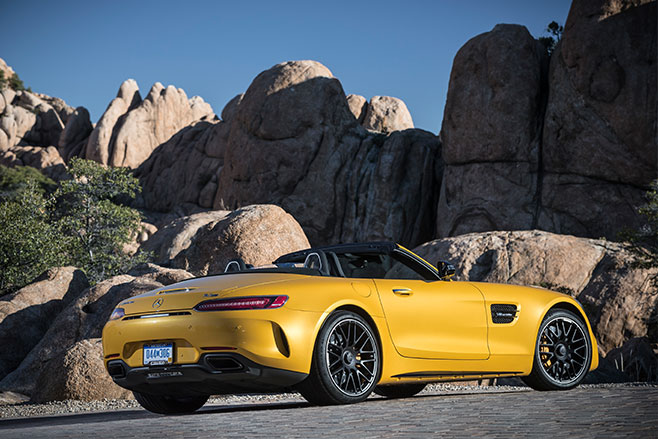
The GT C also stretches the rear end 57mm wider to accommodate the 305/30 R20 rear rubber, takes in an electronically controlled locking differential (the standard car uses a mechanical unit), gains adaptive damping, a stronger seven-speed dual-clutch transmission, it uses the loudest exhaust system, tarmac-tearing brakes and it even has a Race mode.
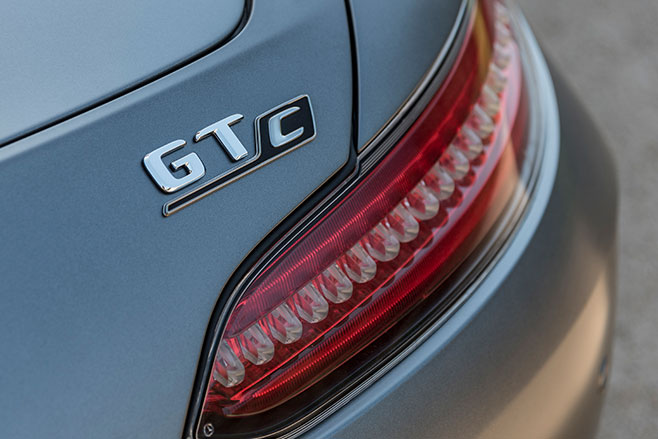
It’s one of the easiest junior supercars we’ve ever had to live with, and it’s somehow softer and more charming, all the time.

